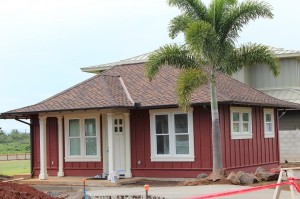
Not Tiny…but smallish home
Tiny Homes Come with Big Challenges
The tiny home craze is everywhere and getting more attention by the day due to rising home prices throughout the U.S. These little structures on flat bed trailers maximize the use of space and in many cases come with higher end finishes. The question that many people ask themselves when thinking about these tiny structures…are these realistic for the average buyer? Here we take a look into the challenges that come with tiny home ownership.
Lack of Mobility
Yes, tiny homes come with wheels. So they should be extremely mobile right? Not so fast. A couple of key items make these little guys a challenge to move on a regular basis. First, utilities need to be connected to the tiny home in order to have the modern, daily conveniences we have all come to expect. Think electric lines connected to the power grid, sewer piping connected out to the the city mainline (or to a septic system on property), water line tap into the municipal supply at the street (or a well on the property), natural gas line connected to the local gas utility and so on. And in case you haven’t built a home lately, connecting and disconnecting these utilities are not like turning on your cable. There is quite a bit of expense and effort required to safely make these connections. So, for a normal house to be connected to all of the utilities, builder budgets typically range in the thousands of dollars.
Also keep in mind these tiny homes can get pretty heavy. So, you’re typically not going to pull one of these with a regular passenger car or truck. So if you plan on moving any distance, factor in a pretty hefty price for the truck and driver to pull it.
Lack of Storage
Hmmm. What’s more important…my golf clubs or my camping gear? This is the type of question tiny home buyers face when moving from a traditional apartment or home to the new space. We should all simplify our lives and stop consuming so much. But at some point, it can become difficult to pare down our possessions enough to fit into ten cubic feet of storage (if you’re lucky to get that much storage in a tiny home). Of course a storage container can be added for storage, but that’s one more thing you will need to move.
Square Footage
One of the biggest challenges with tiny homes is the minimum square footage requirement that many municipalities have for homes within their community. We just reviewed lots in the Cleveland area and found that many of the cities in the suburbs had a minimum square footage anywhere from 1100 to 1500 square feet. Most tiny homes aren’t anywhere near that big.
Loans
Many tiny home shoppers are finding it difficult to secure funding. Some lenders require the tiny home to have R.V. (recreational vehicle) certification. This allows them to lend money for the tiny home as if it were a R.V. Keep in mind, these loans require a 15-20% down payment and typically have a higher interest rate than a standard home mortgage.
Other Options
It’s a good idea to explore other options prior to purchasing a tiny home. It’s true there may not be any existing or new homes currently available in your chosen location for the price you want to pay. But don’t stop looking there. It might be possible to find an affordable lot with utilities that would allow a small, stock home plan to be built that would solve many of the problems listed above and come at a similar price. Armchair Builder is currently working on a new designer house plan with higher end finishes that can be built at a cost similar to a tiny home so stay tuned.

